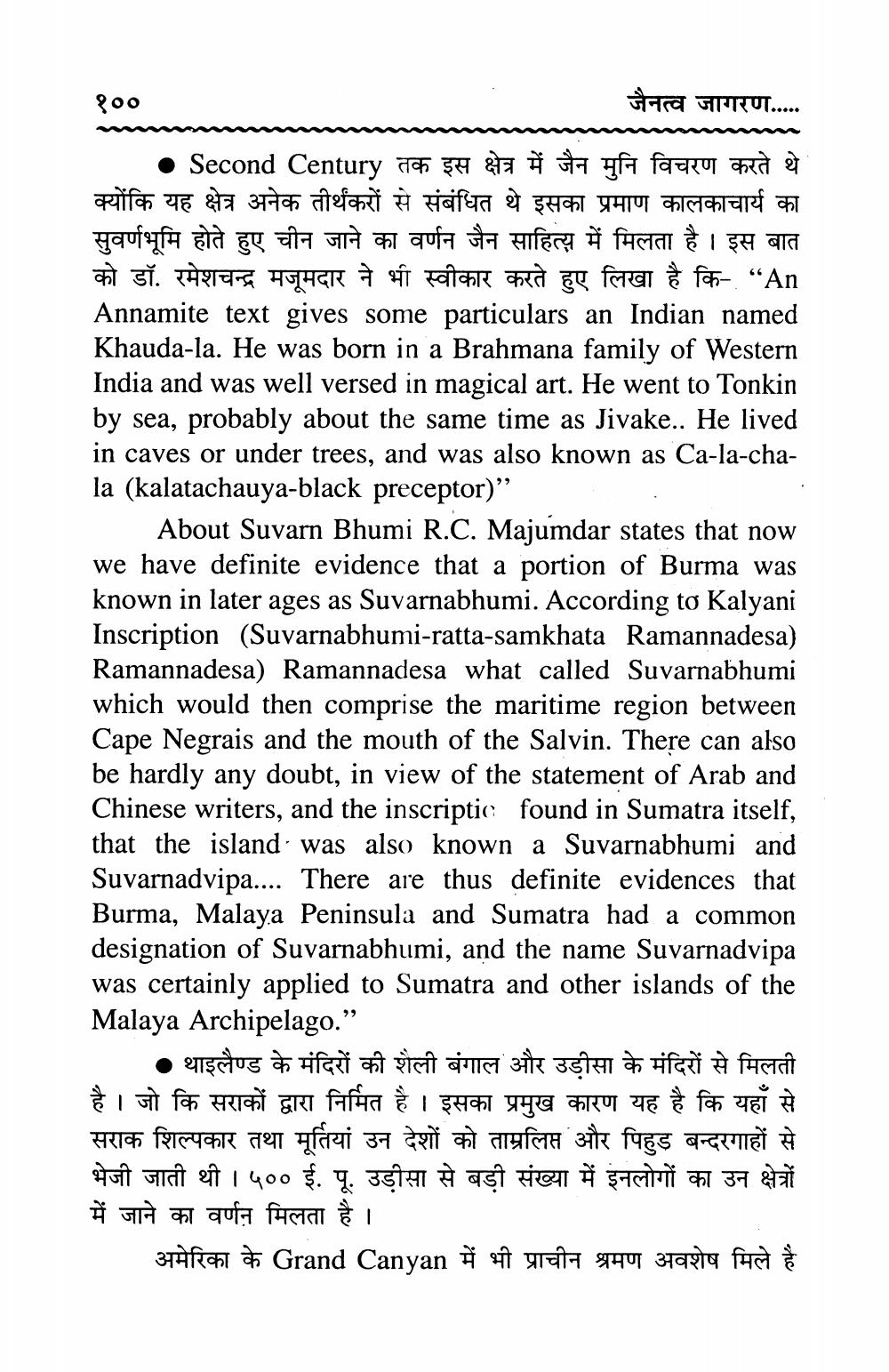________________
१००
जैनत्व जागरण.....
• Second Century तक इस क्षेत्र में जैन मुनि विचरण करते थे क्योंकि यह क्षेत्र अनेक तीर्थंकरों से संबंधित थे इसका प्रमाण कालकाचार्य का सुवर्णभूमि होते हुए चीन जाने का वर्णन जैन साहित्य में मिलता है। इस बात को डॉ. रमेशचन्द्र मजूमदार ने भी स्वीकार करते हुए लिखा है कि- “An Annamite text gives some particulars an Indian named Khauda-la. He was born in a Brahmana family of Western India and was well versed in magical art. He went to Tonkin by sea, probably about the same time as Jivake.. He lived in caves or under trees, and was also known as Ca-la-chala (kalatachauya-black preceptor)"
About Suvarn Bhumi R.C. Majumdar states that now we have definite evidence that a portion of Burma was known in later ages as Suvarnabhumi. According to Kalyani Inscription (Suvarnabhumi-ratta-samkhata Ramannadesa) Ramannadesa) Ramannadesa what called Suvarnabhumi which would then comprise the maritime region between Cape Negrais and the mouth of the Salvin. There can also be hardly any doubt, in view of the statement of Arab and Chinese writers, and the inscriptic found in Sumatra itself, that the island was also known a Suvarnabhumi and Suvarnadvipa.... There are thus definite evidences that Burma, Malaya Peninsula and Sumatra had a common designation of Suvarnabhumi, and the name Suvarnadvipa was certainly applied to Sumatra and other islands of the Malaya Archipelago."
• थाइलैण्ड के मंदिरों की शैली बंगाल और उड़ीसा के मंदिरों से मिलती है। जो कि सराकों द्वारा निर्मित है । इसका प्रमुख कारण यह है कि यहाँ से सराक शिल्पकार तथा मूर्तियां उन देशों को ताम्रलिप्त और पिहुड बन्दरगाहों से भेजी जाती थी । ५०० ई. पू. उड़ीसा से बड़ी संख्या में इनलोगों का उन क्षेत्रों में जाने का वर्णन मिलता है।
अमेरिका के Grand Canyan में भी प्राचीन श्रमण अवशेष मिले है




